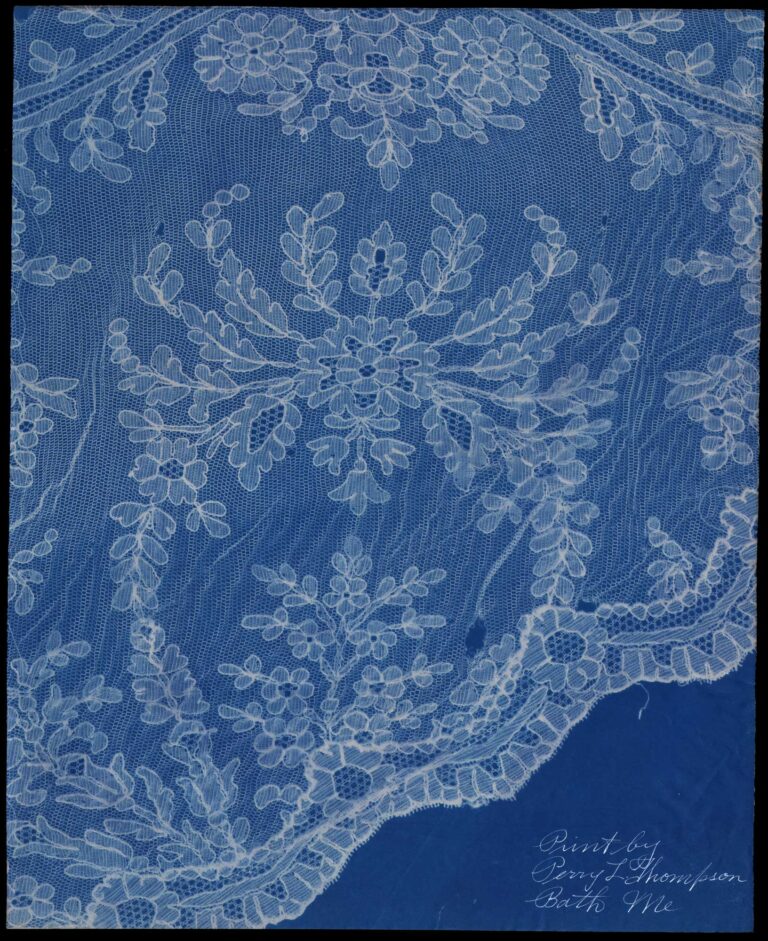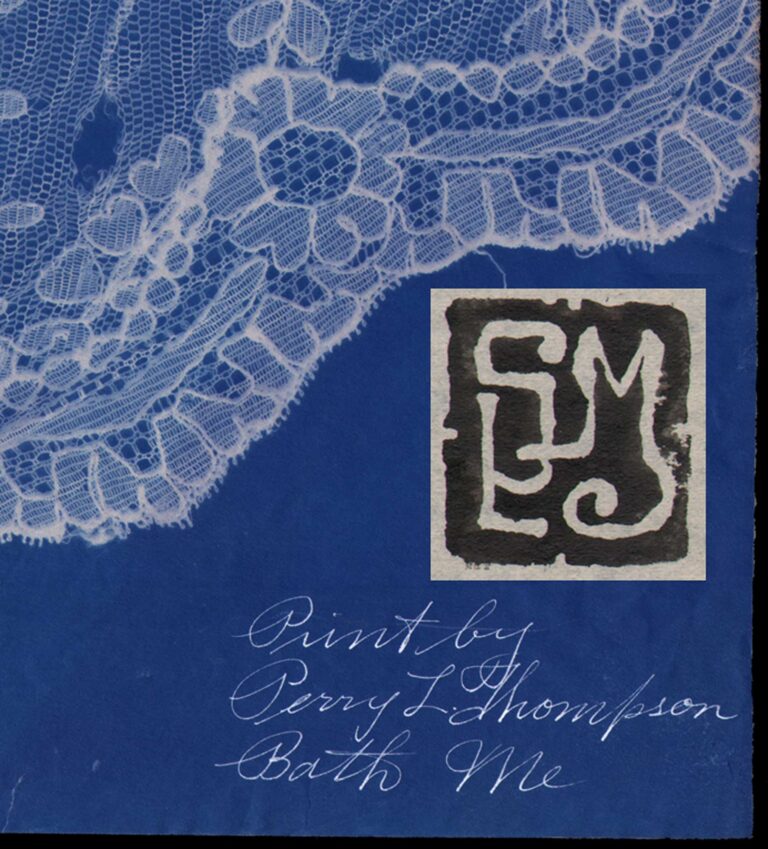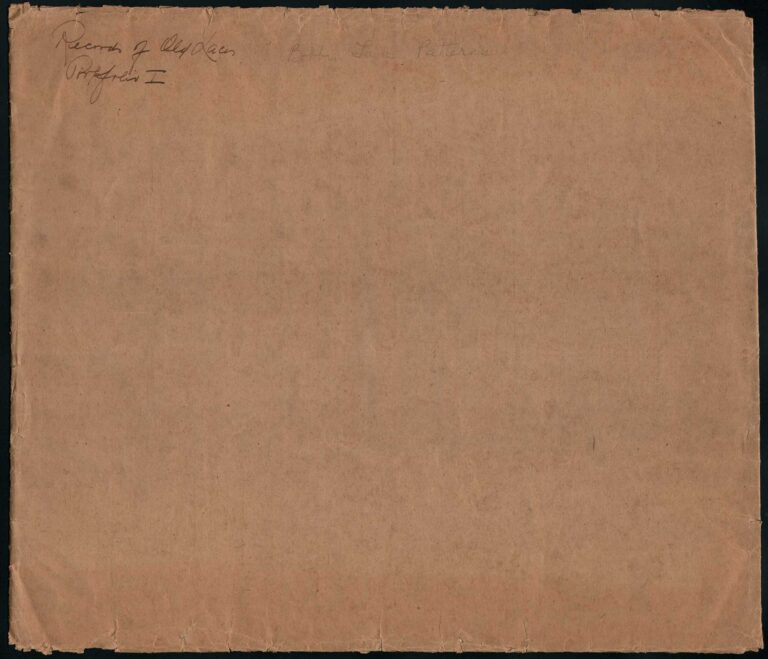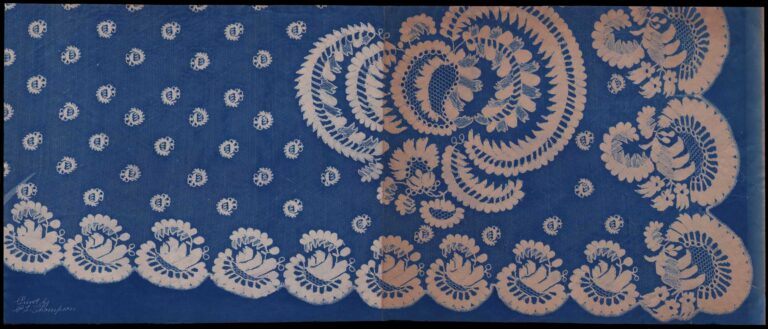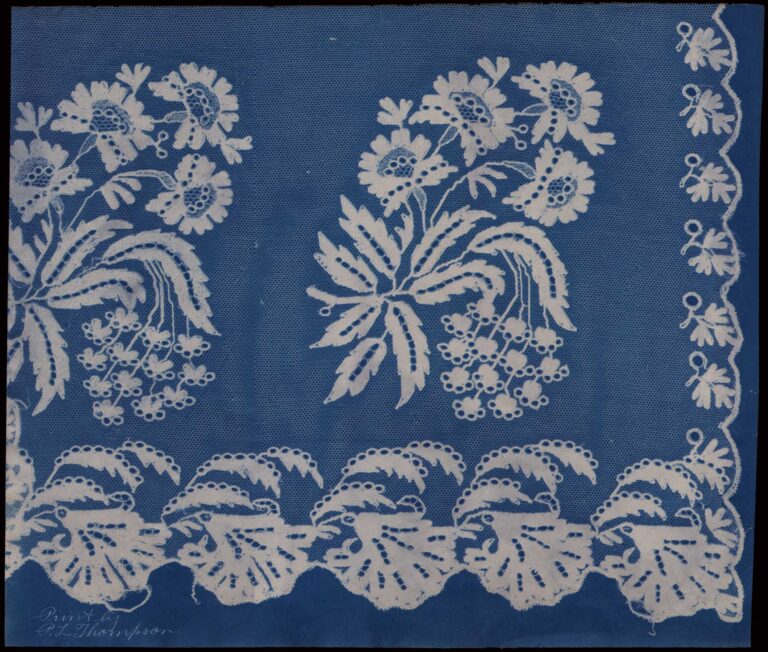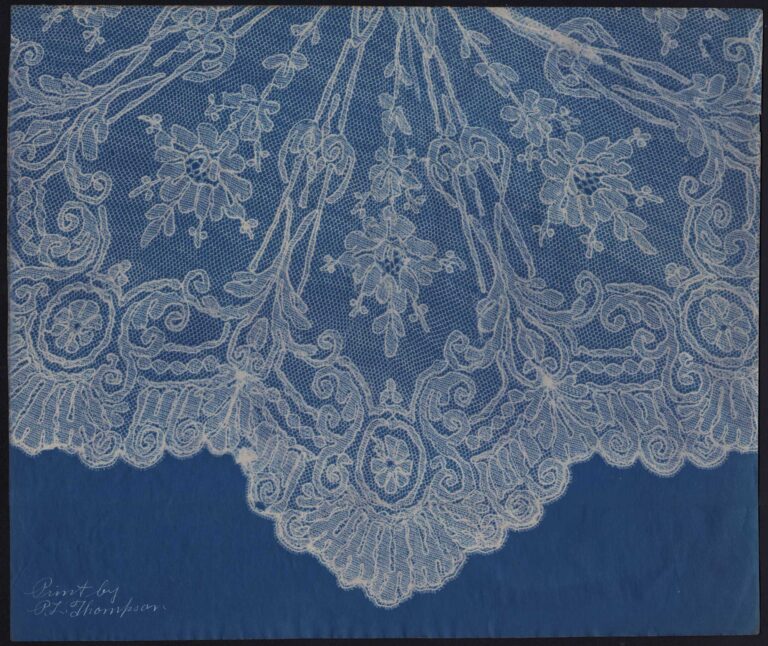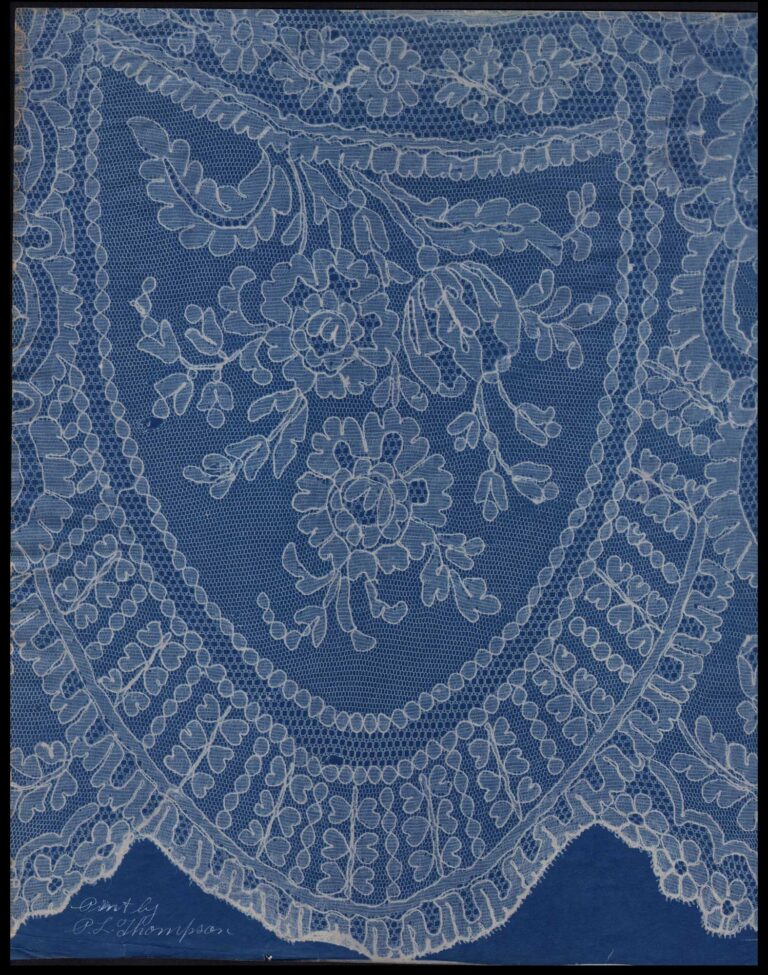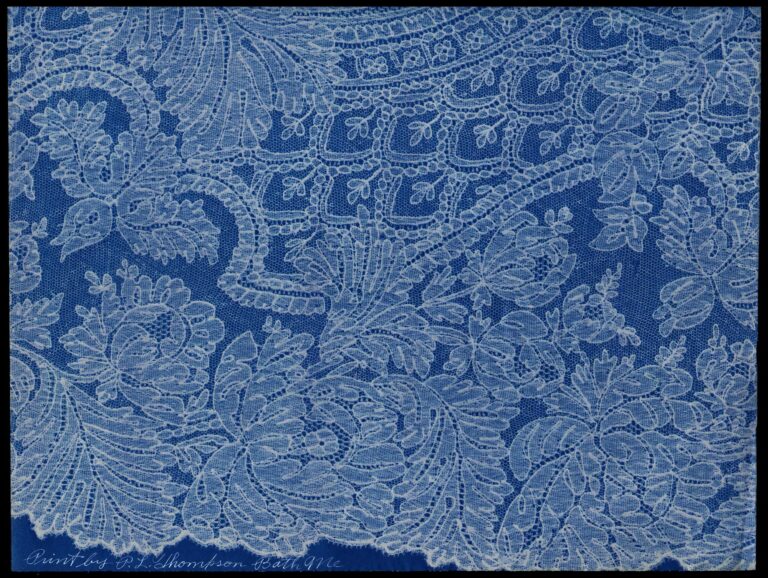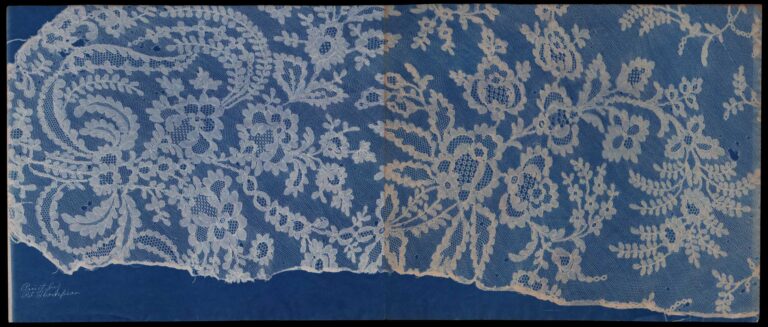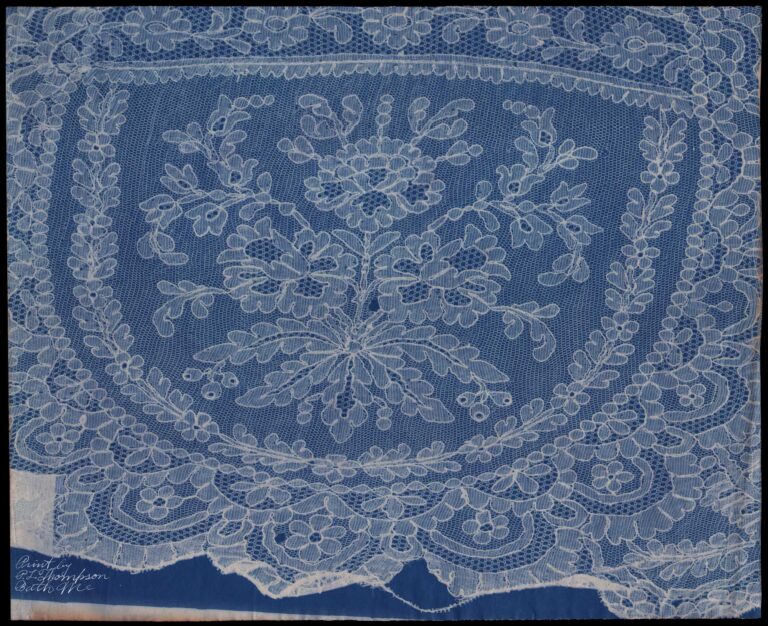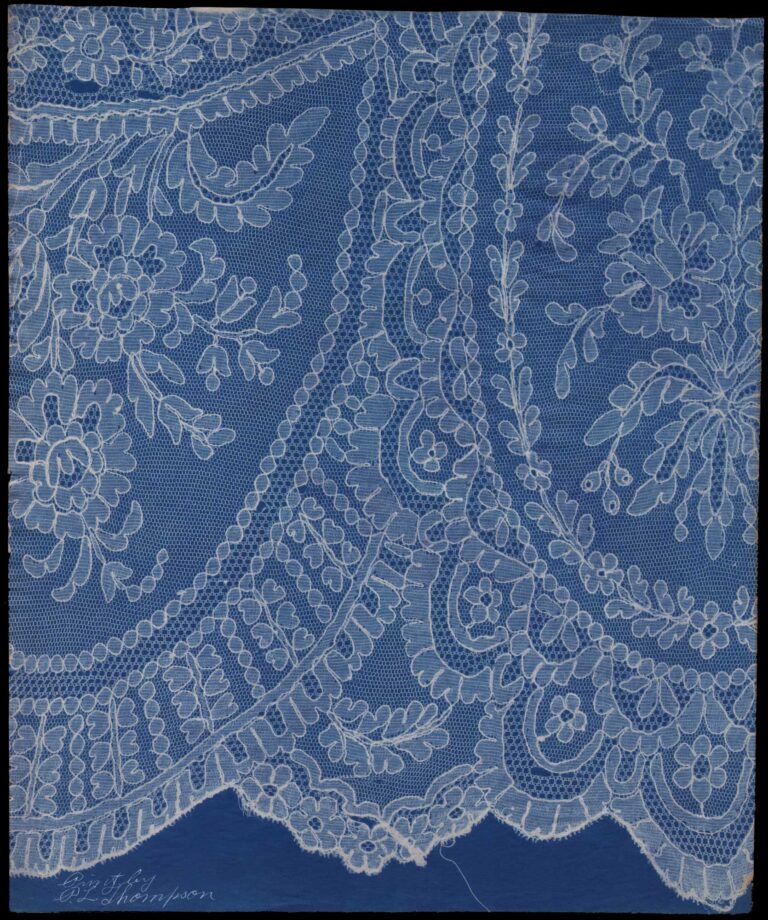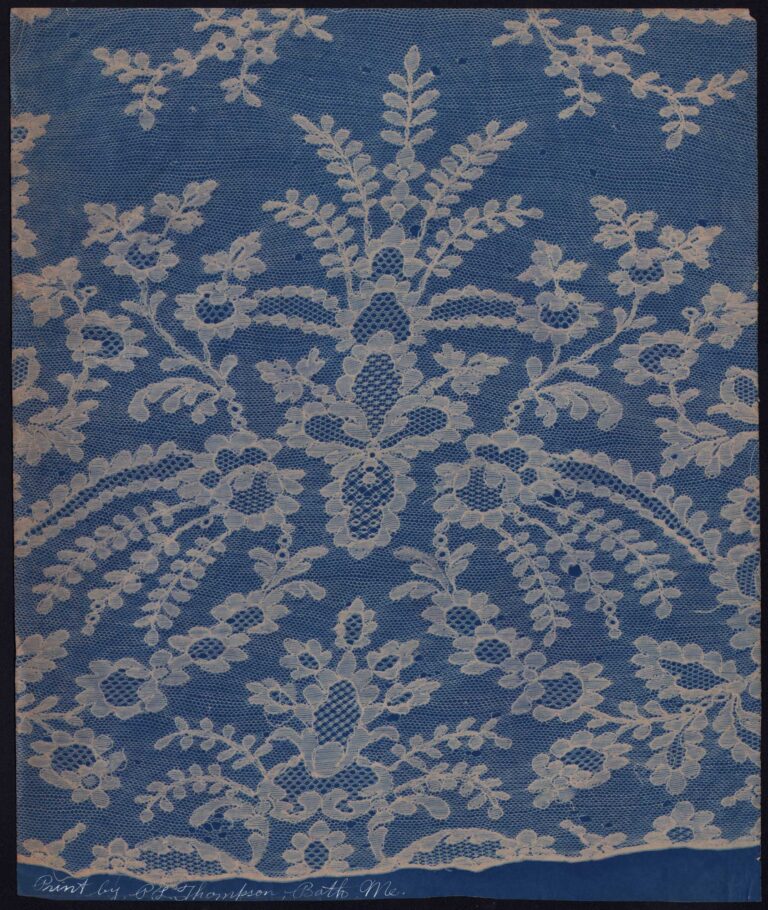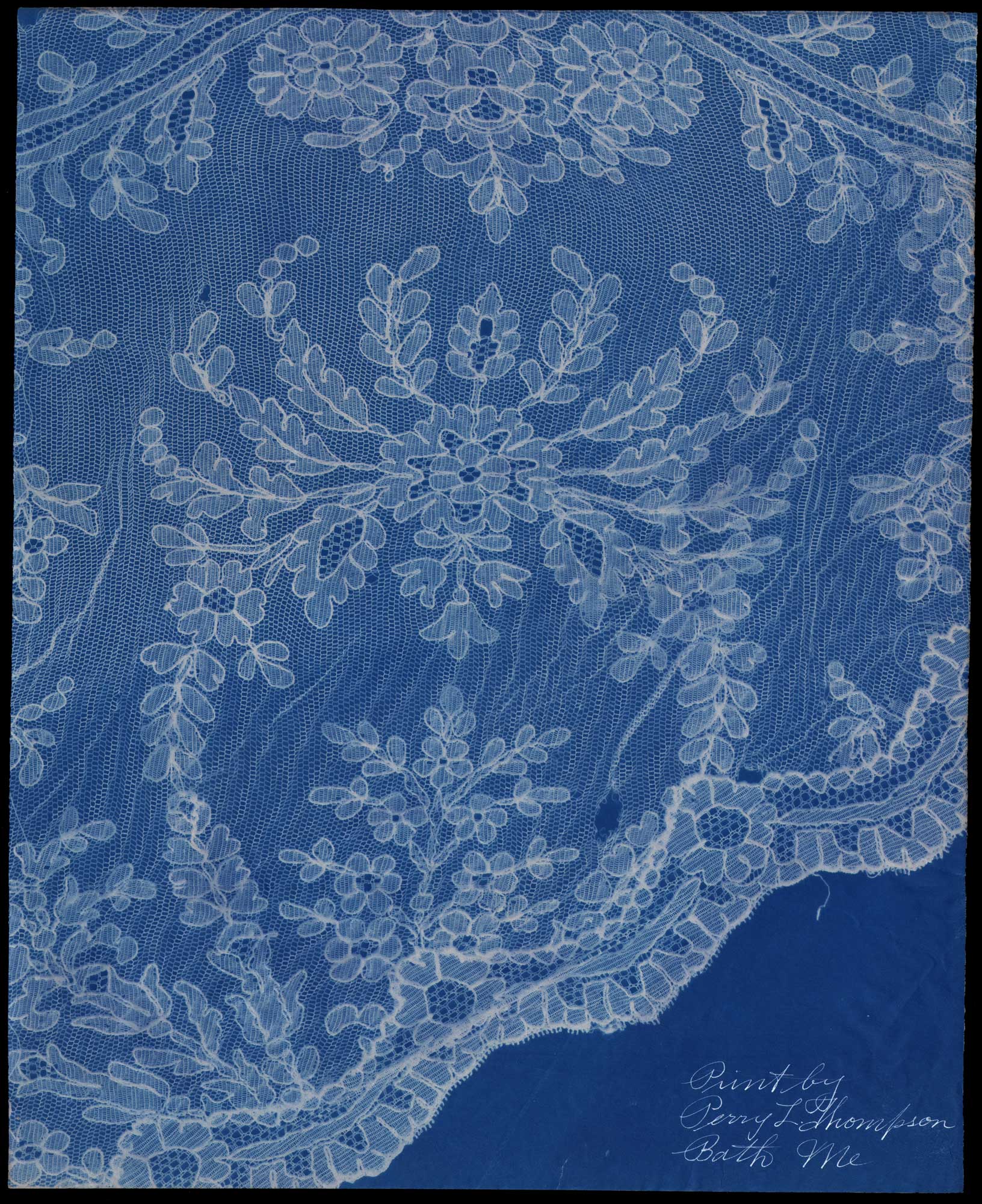
Records of Old Laces: Portfolio 1
This exceptional series of ten large format cyanotype prints, additionally described as Bobbin Lace Patterns on the portfolio folder, were made using a variety of old lace samples. Similar to British pioneer Anna Atkin’s earlier work making photogenic drawings (photograms) by contact-printing botanical specimens of British Algae with chemically sensitive paper, these prints are done using the same methods. In a further nod to her work, rather than recording the name of the specific lace fabric pattern or design, as she employed by writing the Latin botanical names on each print, this Maine artist has substituted his loopy script signature to each: Print by P.L. Thompson
It’s unknown as to the true purpose of the portfolio, which feature exquisite lace pattern designs stitched within a delicate mesh of machine-made silk tulle. They are most likely 19th Century in origin, but perhaps earlier. Could these be fine examples of Ipswich lace, produced in Ipswich, Massachusetts? European examples? Perry Loud Thompson was a Mayflower descendent so it would not have been out of the ordinary for his old New England family to have accumulated 18th Century or more recent examples over the generations.
The other unusual thing about this portfolio is that each print verso features a lovely artist’s or studio black inked, block-printed monogram done in the Arts & Crafts aesthetic. Perry Loud Thompson was already a professional photographer by 1917, according to his World War I Draft registration card, so its possible these prints predate this time period, in keeping with the popularization of that aesthetic, perhaps as early as 1910, when the artist was nearing 20 years of age and exploring creative avenues.
It could also be conjectured Thompson produced these prints as a simple exercise in making something beautiful for that purpose only, although intent seems more likely. Was his act of labeling this Portfolio 1 a clue this may have been a warm up for a longer series of exceptional lace patterns gathered from prominent families in Bath, Maine, the artist’s hometown? A calling card of sorts for his fledgling photography business? An homage to reinterpreting old things that lent themselves to copying in Prussian blue now that blueprint paper was commercially available in the early 20th Century? In the artist’s hometown of Bath, known as the “City of Ships”, this new paper media would have found a natural home in area design studios hoping to stay current in the evolving world of cutting-edge ship design, today, a 400 year legacy of New England shipbuilding. Thoughts or insights welcomed.
Historical Precedents
Vintage examples of lace textiles produced as cyanotype photograms are exceedingly rare, especially in the larger formats. European and English manufacturers in the late 19th and early 20th Century would sometimes produce cyanotype sample books, including with each cyanotype a small clipping of the actual lace sample. Lace researcher and artist Dr. Gail Baxter writes in a 2020 post: “An agent, often in Paris, would buy a length of newly fashionable lace and make a series of cyanotypes from it. They would then attach a small piece of lace to each cyanotype to show the colour and thread. These would then be sold to manufacturers and designers across Europe and potentially the world.”
An album held by the Yale Center for British Art includes 300 cyanotypes depicting specimens of machine and hand-made lace from 5 x 5 cm to 45 x 25 cm in size. Described as “likely the work of a lace collector or enthusiast, not a manufacturer” , the album description continues: “Among the styles depicted are specimens of Mechlin bobbin lace, Flemish bobbin lace, point de gaze, chemical lace, Venetian gros point (or punto a relievo), Brussels lace, Honiton lace, guipure, and point de neige.”
In late 19th Century France, publisher Calavas Frères produced sample books and folios 1875-1890s of cyanotype lace patterns possibly intended for artists’ reference. One example, [Lace Sample] c. 1880s is now held at the Museum of Fine Arts in Houston.
Perry Loud Thompson: 1891-1962
Thompson was a long time commercial photographer in Bath, Maine. He was married twice, after being left a widow, and left no children. Unfortunately, secondary sources are lacking in terms of the type of photography he practiced, other than two architectural views of Bath Gothic churches reproduced in the 1926 volume The American Spirit in Architecture. A brief timeline:
1910: Living with parents Samuel and Lizzie and younger brother Edward at 61 Western Ave. in Bath. His father is a house contractor. (U.S. Census)
1917: Occupation is photographer on his WWI Draft Registration card. Home address is 51 Elm St. in Bath.
1918: Commercial photographer operating in business district: Perry L. Thompson, 146 Front St. Bath, ME (source: Maine Register Or State Year-book and Legislative Manual)
1920: US Census: Photographer with his own studio, his home at 51 Elm Street in Bath.
1930: US Census: Photographer with his own studio. Home, valued at $2000, is at 49 Elm St. in Bath.
1940: US Census: Photographer living at 49 Elm St. in Bath with his own business.
1950: US Census: occupation: Photographer, owning shop, working 44 hours in the past week. Home is 204 Berry’s Mills Road in Bath.
1957: Photographer working at 49 Elm St. in Bath. (source: Maine Register, State Year-book and Legislative Manual)
1959: Still a photographer at 49 Elm St.
1962: Passes. Buried in Oak Grove Cemetery in Bath, ME.
